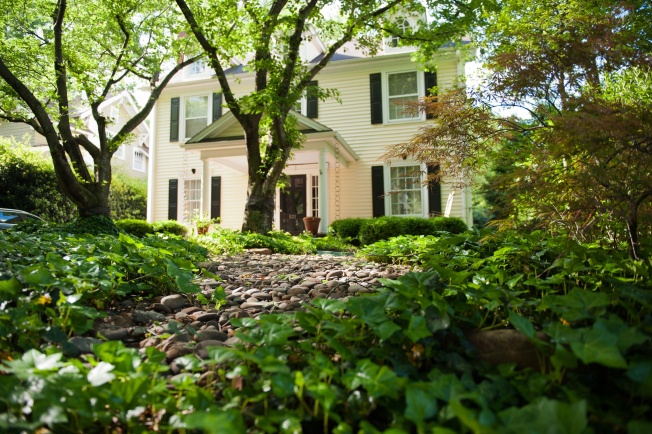Historic district designation can occur at the federal, state, or local level. Local governments may establish a historic preservation commission and program for local historic district designation of a geographically defined area, with a unique set of criteria and potential incentives. The criteria for federal designation of such districts are outlined in the National Register of Historic Places (NRHP). The NRHP is a federal program operated by the National Parks Service (NPS) in partnership with state governments to recognize and protect historic and culturally significant properties and districts.
Why is this important to your community?
Protecting historic districts helps to maintain and revitalize a community’s core, keeping the tax base strong where services are already established. The responsibility for protection of historic and culturally significant properties lies mostly within local governments. National and state resources and programs provide additional resources and incentives such as grants and tax credits. By establishing a local historic district, residents and property owners can protect investments made in the district, and generally can expect their property values to appreciate at a faster rate than similar non-designated neighborhoods according to the National Trust for Historic Preservation. A study of South Carolina communities found that buyers value the extra protection offered by local historic districts and were willing to pay higher prices for their homes. In Columbia, residential home values in two districts increased 26% faster than the citywide average. Local legislation is one of the best strategies for preserving the historic and cultural character of buildings, streetscapes, neighborhoods, and helping to ensure that new construction and renovations in the district complement the local character. In addition, local historic districts help support the local and regional tourism economy. Finally, because many historic or potentially historic properties are located in older neighborhoods in or near town centers, well-maintained historic districts can enhance business recruitment potential by enhancing the type of quality of life attributes (e.g., vibrant commercial core, attractive neighborhoods) many companies and employees seek out and that CONNECT region residents have said they aspire to.
Skip directly to
How Does It Work?
Resources
Using the Tool
Partners
Where Has It Worked?
Where is it appropriate to use?
What priorities does it address?
What other tools are related?
- "Buy Local" Campaign
How does it work?
Both North Carolina and South Carolina enabling legislation allows local governments to establish historic preservation commissions and local preservation programs. South Carolina communities can pursue several options including setting up a local preservation ordinance and commission, adopting design guidelines for a district, and/or participating in the Certified Local Government Program (CLG) through a partnership with the State Historic Preservation Office and National Park Service. CLG communities are eligible for grant funds and technical assistance from the state. North Carolina’s State Historic Preservation Office provides similar guidance and resources for establishing local districts and CLGs. In addition to the local program options, property owners may apply as an individual property or together as a district to be listed on the National Register.
For the most part, historic district ordinances apply to new construction and substantial rehab or modification of a property (e.g., addition or demolition of a portion of the structure). They may also apply to certain protected interior spaces (e.g., historically significant interior public spaces). There are no requirements on property owners to make repairs based on the ordinance, but rather the ordinance applies when a property owner is planning improvements to the building. A few district ordinances include a demolition by neglect provision, which then allows the local government to meet with the property owner and determine strategies to prevent deterioration of a building.
Resources
- National Trust for Historic Preservation – Working on the Past in Local Historic Districts
- North Carolina State Historic Preservation Office
- South Carolina State Historic Preservation Office
- Cultural Heritage Tourism
- Charlotte-Mecklenburg Policy and Design Guidelines for Local Historic Districts
- Handbook for Historic Preservation Commissions in North Carolina
Ready to get started?
Using the Tool
- Assess local property owner and community interest in establishing a local historic district program that helps to protect property values, strengthen local historic and cultural character, and boost tourism. Consider the type of program that best fits your community’s needs – e.g., local historic district designation, zoning-overlay based design guidelines, or Certified Local Government program.
- Enlist the help of the North or South Carolina State Historic Preservation Office (listed in Resources). Both state offices have sample ordinances, guidance on establishing a local district or other program, and additional resources to assist local communities in preservation.
- Build local capacity and support for establishing a program; seek a champion among local business leaders, arts, tourism, cultural organizations, service organizations, and residents.
- If your community is pursuing local historic district designation, conduct an initial survey of historic and cultural resources within the proposed district to inform boundaries and engage and educate property owners within the district.
- Determine the level to which staff resources exist or will be needed – staff planners and zoning review staff – to assist in the administration of the historic district program and ordinance.
- Using sample ordinances and resources, draft a local historic district ordinance / overlay and create a process for appointing a local board or commission to oversee its implementation and review of applications as they occur in the defined district.
- Provide information to owners about the maintenance and repair of historic buildings. Consider developing and distributing guidelines on appropriate changes in the historic districts and coordinating historic district zoning with base zoning. Let residents and potential buyers know up front what types of changes are likely to be considered inappropriate.
- Providing more staff support as needed. Reach out to partners and advocates from the local historic district to plan events and develop materials that support the local historic district. For example, guided walking tours, a self-guided walking tour brochure and online materials, fundraisers to benefit the district, photo or art exhibits highlighting the historic and cultural importance of the district. Well-maintained and showcased districts become a great source of community pride.
- Consider offering financial incentives to assist in the rehabilitation of properties within the district. Maintain partnerships with the state office to continuously share resources and learn about potential grant and technical assistance opportunities.
Partners
- Advocacy Groups
- Architects
- Community Development Organizations
- Economic Development Organizations
- Elected Officials
Where has it worked?
Charlotte Local Historic District Program - Charlotte-Mecklenburg, NC
About the Program
Six of Charlotte’s most significant older neighborhoods have been designated by City Council as Local Historic Districts, in recognition of their importance in the history and character of the city. The Historic District Commission, established in 1976, works within the rezoning process with public review and comment to designate an historic district. Property owners in a designated district are required to contact the Historic District Commission before beginning any exterior changes to an existing structure, new construction, or demolition. A 12-member Historic District Commission and its staff work with property owners and businesses in the districts to assure that development and renovation occurs in a manner that is consistent with the character of the neighborhood and the intent of the district.
Why it works
Tax incentives are available to those who rehabilitate and preserve historic properties through Mecklenburg County, the State of North Carolina, and the federal government. Charlotte’s clearly illustrated Policy & Design Guidelines help to communicate the requirements of the district with property owners. Demand for housing within the historic districts continues to grow. In fact, according to Historic District Commission administrator John Howard, the number of applications for additions or renovations on properties within the historic districts has risen every year since 2010, averaging about 200 a year. In North Carolina, historic district property owners can get a 30 percent (non-income producing building) or a 20 percent tax credit (income producing buildings) for renovating historic structures.
Charlotte Historic District Commission http://charmeck.org/city/charlotte/planning/historicdistricts/pages/home.aspx
http://ww.charmeck.org/Planning/HDC/PolicyDesignGuidelines.pdf
Charlotte Mecklenburg Historic Landmarks Commission http://www.cmhpf.org/
http://historiccharlotte.org/about
http://ui.uncc.edu/story/neighbors-fear-lax-oversight-imperils-dilworth-historic-district
City of Rock Hill Historic Preservation Ordinance - Rock Hill, SC
About the Program
The Board of Historic Review and City Council have identified five historic districts, and several individual historic properties. The five historic districts are listed on the National Register of Historic Places. The purpose of Rock Hill’s Historic Preservation Ordinance is to promote the educational, cultural, economic and general welfare of the public by providing a mechanism for the identification, recognition, preservation, maintenance, protection and enhancement of old, historic and architecturally valuable structures, properties, districts and/or neighborhoods which serve as visible reminders of the social, cultural, economic, political and/or architectural history of the City of Rock Hill.
Why it works
The program is extensive with more than 250 properties in designated historic districts, with about 200 of those considered to be contributing properties. The program website provides a wealth of resources and guidance for property owners about the local program, as well as tips for how to improve energy efficiency and undertake building repairs. District designation has had a positive outcome on property values. An analysis of sales in four local historic districts found that district designation was a positive factor in predicting the value of the house. The Old Town Historic District offers programs and events year round to help support the district economically and celebrate its local importance to the community.
City of Rock Hill http://www.cityofrockhill.com/departments/planning-and-development/zoning/historic-district-information/historic-preservation-information
Rock Hill Board of Historic Review http://www.cityofrockhill.com/departments/boards-commissions/more/boards-commissions/boards-commissions-list/rock-hill-board-of-historic-review
Historic Districts Are Good for Your Pocketbook: The Impact of Local Historic Districts on House Prices in South Carolina http://shpo.sc.gov/pubs/Documents/hdgoodforpocketbook.pdf
- Architects




